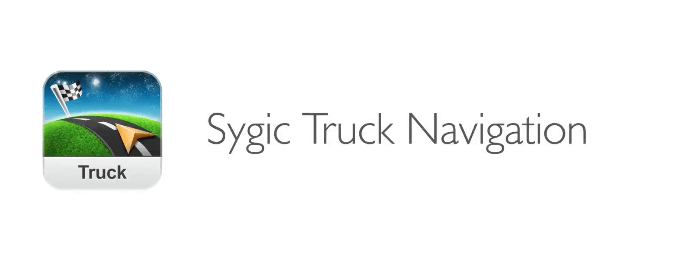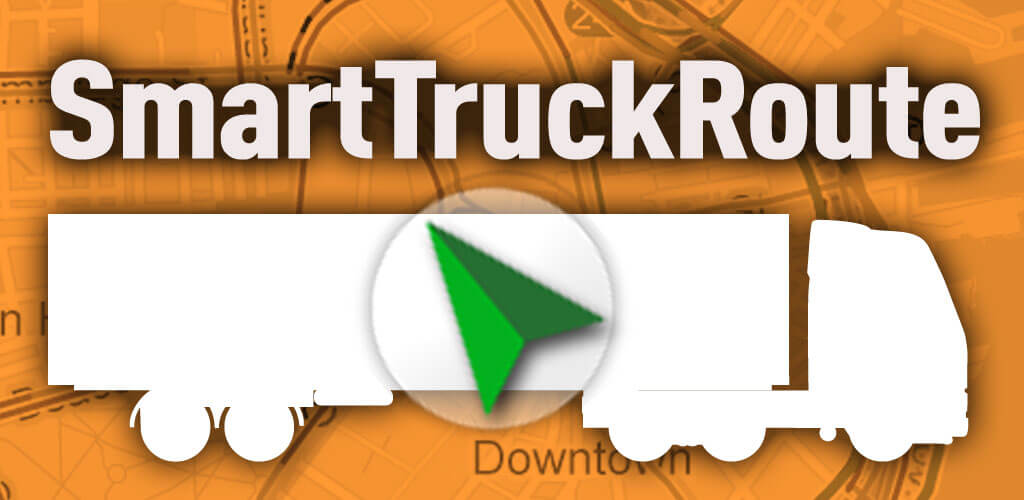6 Best Trucker Trip Planners for 2021

Truckers must accomplish many tasks every single day. They have client deadlines to meet for shipping but must also stay safe on the road, make sure their truck is maintained and operating at peak efficiency, and they must also take time for self-care. That’s where a good trucker trip planner comes in.
But creating an efficient truck driver trip planner is more complex than just mapping the shortest or fastest route. Adding multiple stops, timing those stops properly to avoid construction and excessive traffic delays, and many other factors play a part in a trucker’s daily plan.
The importance of proper trip planning for truckers
Proper trip planning makes truckers’ lives easier and plays a vital role in their success. Why? Not only does it make the trip more comfortable and efficient, but it can also be safer, prevent delays, and lower stress levels. It can even help the business be more profitable overall.
Some of the biggest considerations include planning for fuel stops, rest stops, sleep, and potential delays. Creating a trucker trip planner should be a top priority for drivers, and the company they work for should provide them with the tools and the knowledge to do so. A poorly planned truck driver route can have seriously negative impacts.
The consequences of poor trip planning for truckers
As time-consuming as planning can be, not doing it can mean even more time wasted. Between potential money waste, extra miles, and even the danger of exceeding hours of service, it’s just not worth it.
- Running out of fuel. It’s vital to know ahead of time where fuel stops are so you can fill up before you’re low. But proper truck driver route planning can also make sure you don’t over-fuel before a weigh station or inspection point, which can create overweight issues.
- Inability to find food and rest stops. It’s important to know how and when you are going to eat and where you will rest. Taking care of yourself and not exceeding service hours without rest is critical to a successful trip.
- Breaking down with nowhere to go. Know where repair shops, tire shops, and other vital services are located and plan your route accordingly.
- Ending up in dangerous areas. Wrong turns can put you in the wrong place, especially in large cities, potentially putting you and your cargo in danger.
- Wasted fuel and service hours. Both can cost you money and result in late delivery.
- Damage to your driving record. Poor planning can affectyour reputation and that of the company you drive for. It’s just not worth the long term consequences.
Knowing the benefits of route planning and the consequences of failing to plan, how does a truck driver execute an efficient plan day after day?
11 tips for planning efficient trucking routes
Every trucker has their own routine and planning methods. As long as you are making a plan every single day, you should be fine.
Note: Truckers often like consistent routes, so they can best predict how the haul will go. But this does not mean they are exempt from daily planning. Things change all the time; an unexpected construction zone or weather delay can put a serious wrinkle in the best-laid plans.
Here are 11 tips for planning your day.
- Figure out the total distance of your route for the day. This includes detours, miles off the main road to each delivery or stop, and even the miles you will travel for breaks.
- Set a goal for the number of stops you will make in a day. You can’t foresee everything, but the fewer stops you make, the better. Try to plan restroom and fuel breaks, rest breaks, meal breaks, and any delivery stops you have to make. Set how many times you will stop, and stick with it if possible.
- Use multiple resources for directions. Don’t just plug a destination into Google Maps and trust that the software will know the best routes. Even adding destinations can result in a highly inaccurate trip plan. Check with 511 or state DOT sites for updates on construction, weather, and other potential delays that might result in more miles and impact your service hours.
- Write down directions. Don’t become too reliant on technology. Some truckers use an erasable marker on a corner of their windshields. Others write each leg of the trip on a Post-It note, or use paper maps with the routes clearly marked on them, checking the route each time they stop.
- Know where the obstacles are. Look at the route before you go and when you are totaling your mileage, but check DOT sites and hotlines throughout the day. Pay attention to digital and road signage, and communicate with other truck drivers, dispatchers, and others who might hear about accidents or obstacles before you do.
- Locate repair shops, tire shops, and other important locations before you go. Knowing where these are on your route will help keep you from being broken down with nowhere to go. Ensure you have somewhere to go and someone to call if you do run into trouble.
- Know the best places to fuel up. Gas prices can vary by as much as 10 cents per gallon in different states. Also, where you fuel up can affect weigh-ins, resulting in the appearance that your load is overweight and potential delays. Plan your fuel stops ahead of time, and use fuel rewards programs to save money and track your fuel mileage. This also prevents you from running low on fuel.
- Consider where you are traveling to and where you are traveling through. Are you going through mountains or slow overpasses?Will you be traveling through cities, rush hour, or other traffic peaks? Are there areas you need to avoid? Which roads have the potential to slow you down? Parking is another potential wrench. Especially on the eastern seaboard, plan where and when you will park, and stop early for the day. Otherwise, you run the risk of not finding parking at all.
- Be a weather junkie. The weather can have a huge impact on your day and whether you will reach mileage goals or not. A mountain snowstorm can slow you to a crawl, and road closures can derail your entire trip. Use weather apps, route apps, and check DOT maps for possible bad weather.
- In remote areas, carry extra food, supplies, clothing, and water. The right supplies not only keep you comfortable in the event of route blockages or closures, but can help keep you safe in a breakdown. It’s better to be prepared than to be stranded without the life-saving things you need.
- Communicate constantly and update ETAs. Talk to dispatchers often, update them on the progress of your trip, and let customers know if you are running early or late as soon as possible. This is important to keep your customers happy and your reputation intact. It also can prevent lost time if other drivers arrive at the same time or are ahead of you at delivery or pick up point.
Drivers who plan tend to have better service records, better on-time delivery percentages, and dispatchers, companies, and customers appreciate it.
Best trip planning apps for truckers
Several factors go in to planning safe and efficient truck routes, and it’s a lot for anyone to keep track of. Let technology do a lot of the work for you with a good trucker’s trip planning app.
These apps can do a lot more than help you with routing. They can help in other ways, too:
- Find the best fuel prices.
- Locate truck stops and truck washes.
- Plan rest areas for stops.
- Anticipate weigh stations.
- Locate repair and tire shops along the way.
Here are a few of the best trip planning apps for truckers.
Sygic – Heavy Vehicle GPS

Sygic claims to be the most downloaded app for professional drivers. It offers several useful features for heavy truck drivers.
- Offline maps that factor in truck attributes
- Speed limit and speed camera warnings
- Truck stops, patrol stations, and speed zones
- Emission zone routing
- Imports from Google Maps
- Integrates with major fleet management systems
Waze

Waze is a great app that allows for user input in real time. This means you can drive like a local, even in an area where you have never been before, and it offers all kinds of benefits to help truck drivers save money.
- Get real-time help from other drivers to anticipate the best routes.
- Report accidents and other delays to help others.
- Get as-it-happens alerts for police, accidents, road hazards, or traffic jams.
- Find the cheapest gas stations thanks to community-shared pricing.
- Share fuel prices to help other drivers.
Garmin

Garmin offers specific products designed for truckers, packed with features that help save time and money.
- Custom truck routing
- Load-to-dock guidance
- Popular truck routes
- Driver alerts in real time
- Truck-friendly parking
- Preferred truck stops you can filter by brand or feature
SmartTruckRoute

This app is also designed specifically for trucks and has been around for a long time. It accounts for important things like truck entrances and is packed with features specific to truck driver needs.
- Get truck routes quickly by either speaking or typing your destination.
- Customize your truck specs to get the best routes possible.
- Spot low bridges and avoid parkways and residential areas.
- Save unlimited points for future reference.
Rand McNally IntelliRoute

The Rand-McNally devices come with a range of Wi-fi enabled features, and they claim more truck-specific information than any other app out there.
- Truck-specific routing
- Audio out capability – Enables drivers to route their device sound through their truck audio systems through an easy-to-use interface
- Over-the-air map updates
- Advanced lane guidance and lane assist
- Customizable warnings
- Electronic driver logs
- Electronic driver vehicle inspection reporting
COPILOT Truck

This navigation app built for truckers offers key driver-specific features and can integrate with fleet management software.
- Avoid low bridges and truck-restricted roads with PC*MILER routing.
- Keep your concentration on the road with the non-distracting in-cab design.
- Optimize trips for your specific vehicle, load, and the number of stops.
- Avoid fines and reduce fuel by spending less time on out-of-route miles.
- Use real-time traffic info to steer clear of delays, get an accurate ETA, and deliver on time.
Start planning efficient routes today.
Using software and a daily plan, you can start with more efficient routes right away. Find the apps that work best for you, and use the multi-trip feature on load boards to plan routes by origin and destination. Dispatchers and customers will appreciate your attentiveness and on-time service. With smart planning and the tips in this guide, you can save time, money, and become one of the most efficient drivers on the road.
Topics:

Find out how our platform gives you the visibility you need to get more done.
Get helpful content delivered to your inbox.
Schedule a demo.
Find out how our platform gives you the visibility you need to get more done.





